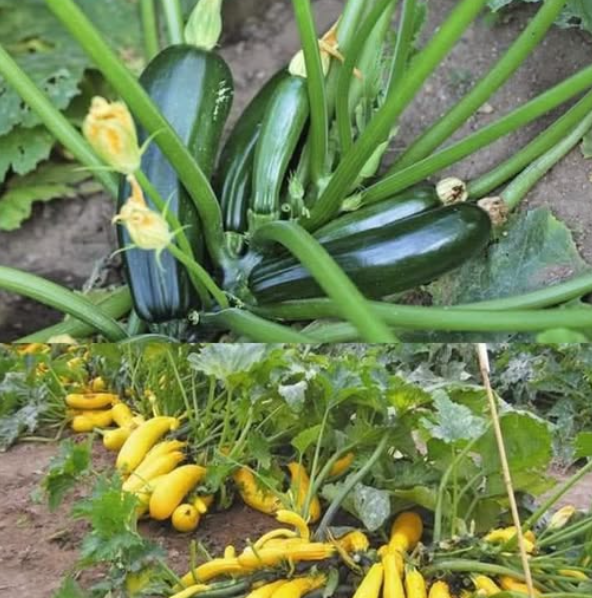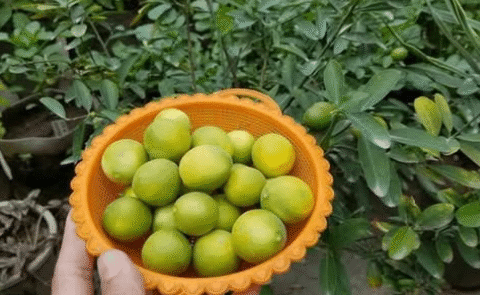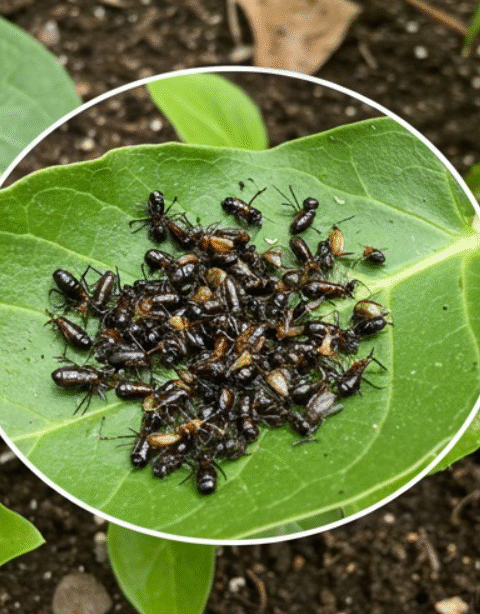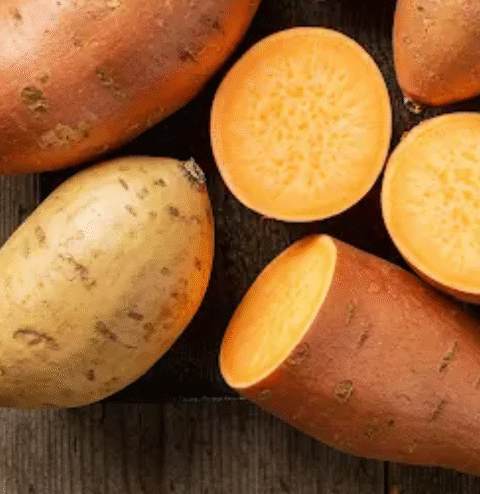Grow Your Own Healthy Vegetables at Home: A Complete Guide to Getting Started 🥕
There’s nothing better than taking that first step—growing your own vegetables. This isn’t just about saving money anymore: it’s about the pride, nutrition, and peace of mind that comes with knowing exactly what’s on your plate. Using homegrown produce, especially when grown organically, means fewer worries about pesticides, unknown origins, and uncertain food safety.
Why Growing Your Own Vegetables Is a Smart Move
Even though most vegetables are affordable and easily available at stores, there’s growing concern about their safety and origin. Reports of pesticides, soil contaminants, and unclear supply chains have made many of us question what we bring home. Growing at home gives you full control, plus it’s a rewarding, health‑boosting hobby that brings fresh, nutritious food right to your kitchen doorstep.
Before You Get Started: Key Planning Steps 📝
Starting your own vegetable garden requires a bit of thoughtful planning—especially if space is limited. Here’s what you should consider:
- Evaluate your space: Whether it’s a backyard, balcony, or windowsill planter box, good organization is key for limited areas.
- Plan what to grow: Choose vegetables that fit your space, climate, and family preferences.
- Check regional suitability: Ensure chosen veggies can thrive in your local climate and season.
- Seek advice if unsure: Don’t hesitate to consult experienced gardeners or local garden centers.
- Do your research: Every plant has unique needs—soil type, planting time, water, and care.
- Embrace patience: If a crop fails the first time, try again. Gardening is as much about love as it is about logic.
Top Vegetables to Grow at Home: Nutritious and Easy-to-Manage
The vegetables listed below are well-suited to home gardening, productive, and rich in nutrients. Even if your goal isn’t primarily saving money, growing these can feel like striking a healthy jackpot!
1. Green Beans
Why they’re great: Both bush and pole beans offer high yields over long periods. Pole beans, in particular, are known for their abundant harvests and minimal space usage.
Growing Tips:
- Direct-sow seeds after frost passes.
- Plant in full sun with consistent water.
- Harvest regularly to prolong productivity.
2. Cucumbers 🥒
Why they’re great: Fast-growing, compact, and prolific. Cucumbers are perfect for fresh salads or pickling. A trellis helps save space.
Growing Tips:
- Direct-sow after the frost has passed.
- Provide full sun exposure.
- Use support for vining types.
3. Tomatoes
Why they’re great: Highly versatile and often expensive at supermarkets, tomatoes yield heavily throughout the growing season. From sauces to salads, homegrown flavor is unbeatable.
Growing Tips:
- Start seeds indoors 6–8 weeks before last frost or purchase starter plants.
- Ensure full sun and support plants with stakes or cages.
- Keep soil uniformly moist, avoid overwatering near leaves.
4. Bell Peppers
Why they’re great: Store-bought organic peppers are pricey, so growing your own can make a big difference. Peppers produce reliably and beautifully in home gardens.
Growing Tips:
- Begin indoors 8–10 weeks before last frost or buy seedlings.
- Keep in full sun.
- Provide regular water and light support for heavy fruit.
5. Leafy Greens: Lettuce, Spinach, Kale
Why they’re great: Rapid growers with multiple harvests. Especially valuable if you want continuous salad greens or smoothies through the season.
Growing Tips:
- Direct-sow in early spring or late summer.
- Expect to harvest often to encourage new leaf growth.
- Prefer partial shade to full sun, depending on variety and heat.
6. Zucchini
Why they’re great: Infamous for being abundant—just one or two plants can yield more than many produce in a week. Great for summer meals and quick cooking.
Growing Tips:
- Direct-sow seeds after frost.
- Full sun and consistent moisture are a must.
- Harvest frequently to encourage ongoing production.
7. Potatoes
Why they’re great: Nutrient-rich, easily stored, and high-yielding. Ideal if you’re interested in root crops and organic flavor options.
Growing Tips:
- Plant certified seed potatoes in early spring.
- Use full sun and hill-up soil as they grow.
- Maintain steady moisture—not soggy, not dry.
8. Carrots
Why they’re great: Affordable and surprisingly sweet when homegrown. They store well and can be grown in succession for multiple harvests.
Growing Tips:
- Sow seeds directly in early spring or late summer.
- Thin seedlings to prevent overcrowding.
- Keep soil consistently moist for straight, well-formed roots.
9. Garlic 🧄
Why they’re great: Minimal maintenance, long storage life, and unbeatable flavor. Plant in fall and harvest the following summer.
Growing Tips:
- Plant cloves in fall before ground freezes.
- Mulch heavily to control weeds and provide insulation.
- Water moderately—too much moisture can rot bulbs.
10. Onions
Why they’re great: Versatile—used green or matured into storage bulbs. Store well, simple to grow, and a kitchen essential.
Growing Tips:
- Start from sets or seeds in early spring.
- Ensure full sun exposure.
- Keep soil weed-free and evenly moist.
11. Fresh Herbs: Basil, Parsley, Cilantro
Why they’re great: Fast-growing and expensive when bought fresh. When grown at home, herbs can be harvested all season and add immense flavor punch.
Growing Tips:
- Sow in containers or garden beds—inside or out.
- Place in full sun or partial shade depending on flavor and heat.
- Harvest often to encourage bushier plants.
12. Radishes
Why they’re great: Fastest-growing household veggie—ready to eat in 3–4 weeks. Great for teaching kids gardening and fun for succession planting.
Growing Tips:
- Sow seeds in spring or late summer.
- Provide full sun or partial shade.
- Harvest when roots are tender and small.
Expert Insights & Health‑Safety Tips
Dr. Leila Nour, an expert in nutritional horticulture, recommends rotating crops annually to reduce soil-borne pathogens. She emphasizes the value of composting kitchen scraps to build nutrient-rich soil naturally.
Prof. Mark Benson, an agricultural extension advisor, suggests raised beds with well-draining soil to prevent root rot and fungal issues. He also advises pairing fast growers (like lettuces) with slower growers (like tomatoes) to maximize space.
Safety & Cleanliness Tips 😊
- Always sterilize tools, pots, and seeds before use, especially if reusing containers.
- Use organic pest control methods like neem oil or insecticidal soap instead of synthetic sprays.
- Avoid chemical fertilizers—opt for compost, organic blends, or fish emulsion where possible.
- Wash hands thoroughly after handling soil, especially if you touch raw compost or local soil.
- If growing indoors or in confined spaces, ensure proper ventilation to reduce mold risk.
Nutritional Benefits Table of Common Homegrown Veggies
| Vegetable | Per 100 g Nutrients | Key Health Benefits |
|---|---|---|
| Green Beans | ≈ 7 g protein, 4 g fiber, Vitamin C | Gut health, immune support, low calories |
| Cucumber | ≈ 95 % water, small amounts of B‑vitamins, potassium | Hydration, digestion, low‑cal snack |
| Tomatoes | ≈ 18 mg lycopene, Vitamin C, potassium | Heart health, antioxidants, skin support |
| Leafy Greens | Folate, Vitamin K, iron, fiber | Bone health, digestion, blood health |
| Zucchini | ≈ 17 mg Vitamin C, B‑vitamins, fiber | Weight management, heart health, vitamin support |
| Potatoes | ≈ 77 kcal, 2 g protein, potassium | Energy, mineral balance, good starch |
| Carrots | ≈ 7 mg beta‑carotene, Vitamin A, fiber | Vision, immunity, digestion |
| Garlic | Allicin, Vitamin C, manganese | Heart health, immune boost, antibacterial |
| Onions | Quercetin, Vitamin C, sulfur compounds | Anti‑inflammatory, immunity, flavor headliner |
| Herbs | Varies—Vitamin A, C, K, antioxidants | Flavor, digestion, vitamin boost |
| Radishes | ≈ 1.6 g fiber, Vitamin C, folate | Detox, digestion, crunchy nutrition |
10 Frequently Asked Questions (FAQs)
- How much space do I need? Even a small balcony planter or container garden (4×4 ft or smaller) can support several crops if planned well.
- Do vegetables need special soil? Most benefit from loose, well-draining soil enriched with compost or organic matter.
- Can I grow vegetables indoors all year? Yes—with grow lights or a sunny window, many veggies like leafy greens and herbs can thrive indoors.
- How often should I water? Generally 2–3 times per week, depending on weather and soil. Look for moist but not waterlogged conditions.
- Can I compost vegetable scraps? Absolutely—composting kitchen scraps helps close the loop and improves soil fertility naturally.
- How do I control pests organically? Use neem oil, insecticidal soap, physical barriers (like netting), and encourage pollinators and predators like ladybugs.
- What if crops fail? Don’t be discouraged! Learn, adjust, and try again—gardening rewards patience and resilience.
- Is crop rotation important? Yes—rotate plant families (e.g. tomatoes, beans, root crops) each year to reduce pests and soil diseases.
- When should I plant? Timing depends on your climate—but generally spring planting follows frost dates, with a second succession planting in late summer.
- Can I plant continuously for a fall harvest? Yes—many greens and root vegetables perform well in late-season planting and cooler weather.
Seasonal and Space‑Saving Strategies 🌱
If space is a constraint, consider these ideas:
- Container gardening: Use pots, grow bags, or vertical wall planters.
- Raised beds: Improve drainage, reduce bending strain, and optimize soil quality.
- Vertical trellising: Ideal for beans, cucumbers, tomatoes, and climbing peas.
- Succession planting: Sow seeds in intervals so different crops mature at different times.
- Crop-pairing: Plant fast growers (lettuce) among slower ones (tomatoes) to use space efficiently.
Sample Seasonal Garden Plan for a Small Plot
Here’s an example of how to plan planting over one growing season in a compact area (approx. 4×8 ft raised bed or containers):
- Early Spring: Sow radishes, lettuce, spinach; protect with row cover.
- Mid Spring: Transplant onions, garlic (from fall peel), carrots; thin greens.
- Late Spring / Early Summer: Sow beans, cucumbers, tomatoes, peppers, zucchini.
- Summer Continuation: Harvest greens, pick beans regularly, trim herbs and peppers.
- Fall Succession: Sow another round of lettuce, kale, spinach; cover with frost cloth if needed.
Final Thoughts
Growing your own vegetables is more than a hobby—it’s an investment in your health, confidence, and the delicious flavors of home‑grown food. Whether you have a backyard or just a sunny window ledge, these 12 vegetables deliver high yield, nutrition, and ease of care. With expert guidance, proper hygiene, and a little preparation, you can build a garden that feeds both body and soul.
Let me know if you’d like curated recipes (like fresh herb pesto, zucchini fritters, or tomato salsa), companion planting guides, or a printable planting calendar tailored to your climate! 🌿






